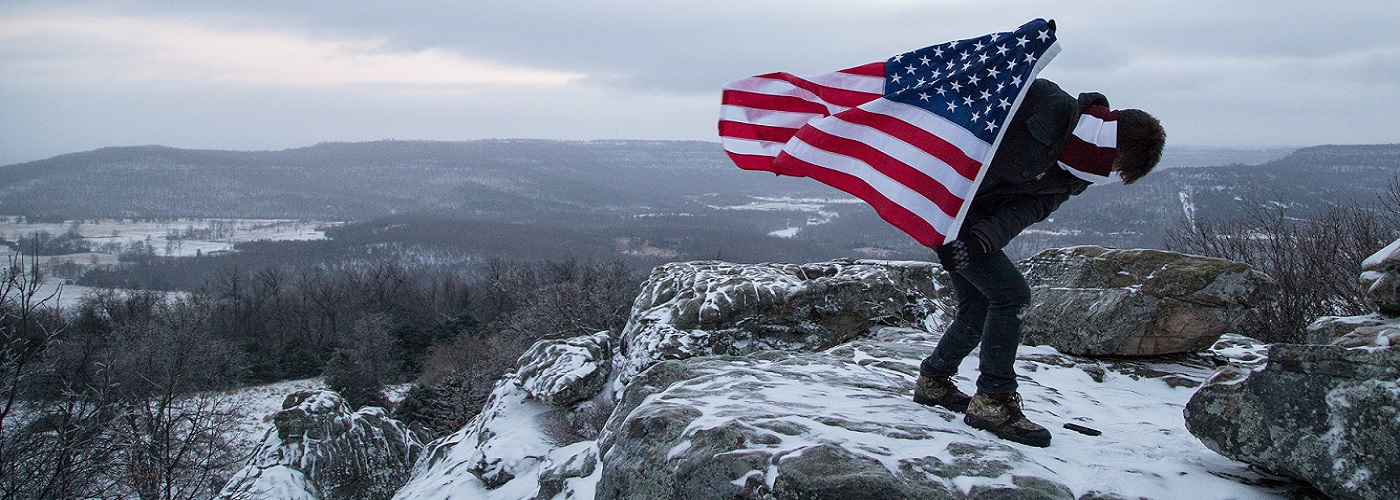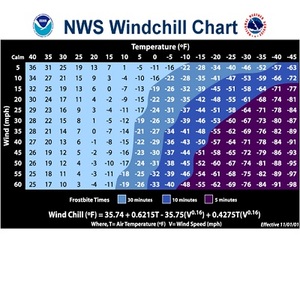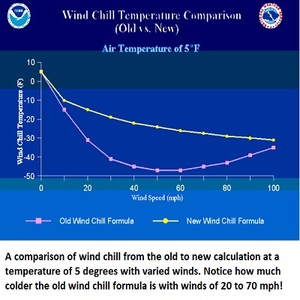

Prior to the 1970's, the term wind chill had not yet made it into the lexicon of meteorology. It wasn't until 1973 that the wind chill temperature began to be used by meteorologists. Some folks think that the use of a wind chill temperature is just a sensationalized number to grab their attention. Others feel it is an important reading to be aware of, as it tells a more complete story of what it really 'feels like' outdoors to our bodies.
The basic science behind the wind chill involves the fact that our bodies are constantly warming the air that resides right next to our skin. When there is little wind, our bodies are able to keep this semi-insulated shell of air around it, as we expose ourselves to the outdoors. On windy days, our body continues to warm the air next to us, but that body-warmed shell of air is continually transported away from us, thereby making it feel colder to our bodies. This consistent heat loss results in colder skin temperatures when windy conditions are encountered compared to when conditions are calm.
The first mention of the need for a wind chill temperature came from explorers on a polar expedition in Antarctica back in 1939. Under orders from President Franklin D. Roosevelt, a group of 125 men were on an expedition to establish two military bases on the icy continent. It was during this mission that two American scientists, Charles Passel and Paul Siple, noted the huge difference in how cold they felt based on how much wind they encountered on the expedition. They conducted experiments that started with a cup of water of a specific temperature. Then they would expose this cup to the elements and record how long it took the water to freeze. They did this in light and heavy wind conditions, and noted how the water froze quicker as the wind increased. This occurred due to the fact that higher winds would transport heat away from the water quicker, thereby freezing it faster. This data was then crunched over time to make the first formula for calculating the wind chill.
T(wc) = 0.0817(3.71V^0.5 + 5.81 -0.25V)(T - 91.4) + 91.4
V=Wind Speed
T= Air Temperature
^ = raised to a power (exponential)
This first formula was accepted for decades, until scientists began to think of how a better formula could be made. You could call it a “wind chill revolution.” It became widely thought among meteorologists that this old system was giving an inflated value of the wind chill. They believed that our bodies probably don't act exactly like a glass of water in the cold, and a more relevant set of data was needed to formulate a revised algorithm. Two North American scientists (Randall Osczevski and Maurice Bluestein) collaborated to create a new wind chill formula. The new formula was introduced and replaced the old wind chill formula in the fall of 2001. The new formula employed updated heat transfer theory and actually used humans in clinical trials that were conducted. 12 volunteers were used in the experiments that involved walking on a treadmill in a refrigerated wind tunnel (now that sounds like a great time)! Sensors affixed to the face took measurements of skin temperature at various points in the experiment. With the data collected during these trials, a revised chill formula was born.
Windchill (ºF) = 35.74 + 0.6215T - 35.75(V^0.16) + 0.4275T(V^0.16)
Where: T = Air Temperature (F)
V = Wind Speed (mph)
^ = raised to a power (exponential)
Whether you prefer the old or new wind chill formula, the end result is that wind certainly makes a big difference in how cold we feel when we are outdoors. The best way to mitigate the impact of the wind chill is dressing in layers and keeping exposed flesh to a minimum. By layering, you allow your body the ability to retain some of the heat that would otherwise be lost due to wind. By taking the necessary precautions, you will greatly lessen the risk for frostbite. If you are outside and do start to notice numbness or a prickly feeling on your skin, you are experiencing the initial signs of frostbite. At that point, you would want to seek warmth immediately, in order to avoid full-fledged frostbite. The key is to be smart and don't let the efforts of those 12 brave volunteers who subjected themselves to the elements go to waste!

